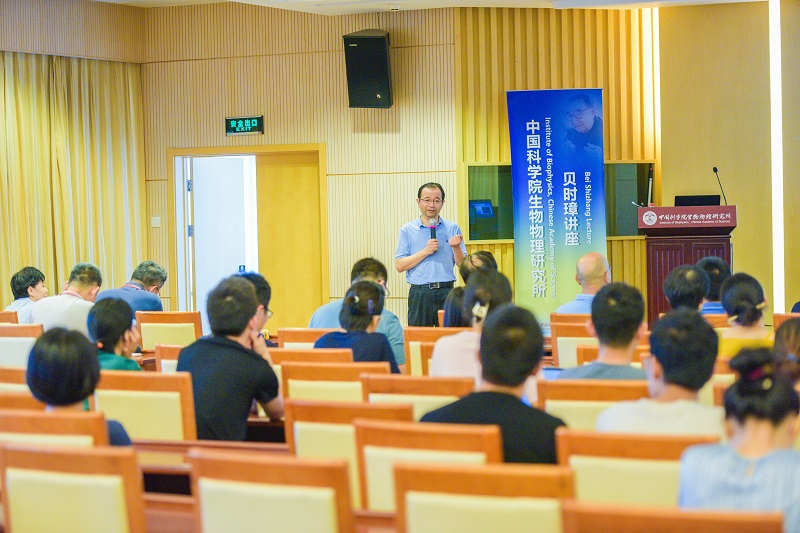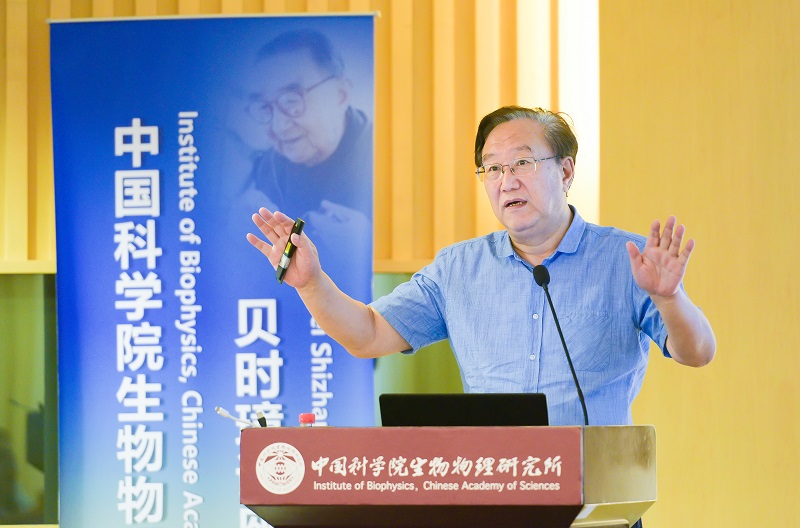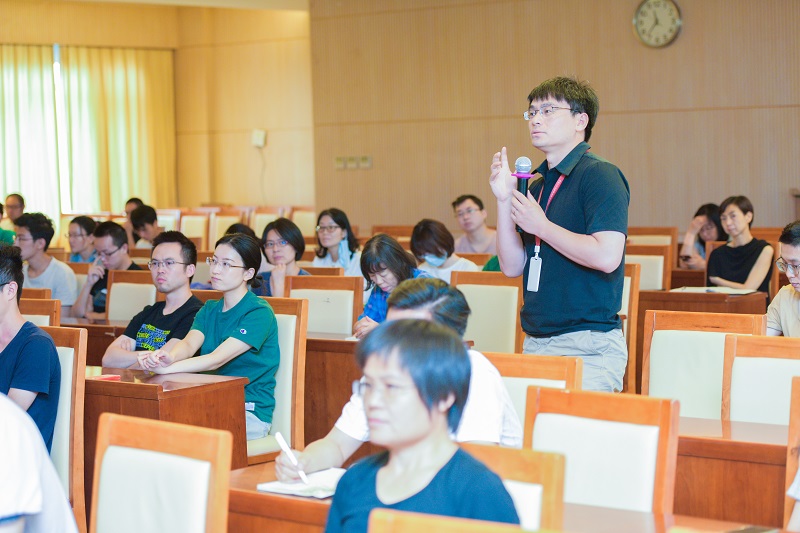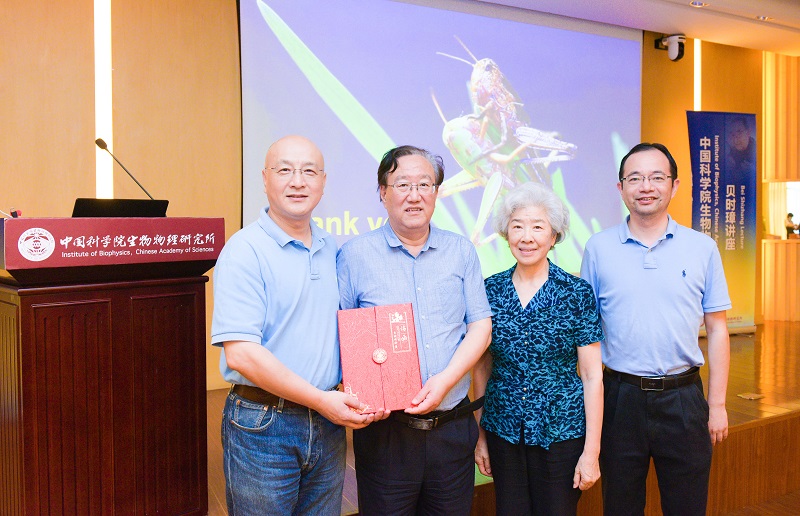Academician Kang Le visited Institute of Biophysics and gave a Bei Shizhang Lecture
On June 16, 2021, Prof. Le Kang, CAS member, was invited by IBP to deliver a Bei Shizhang Lecture entitled Secret of locust swarming and plagues: balance of two pheromones PAN and 4VA resulting in locust aggregation. This report was hosted by Prof. Bing Zhu and attracted many researchers and students.
Prof. Kang has been engaged in ecological genomics research for a long time. With locusts as the study animal, he systematically studied animal adaptability and phenotypic plasticity, and made a milestone breakthrough in the study of locust swarming mechanism, which laid a foundation for the development of new technologies for locust plague control. Prof. Kang has won many important awards such as Ho Leung Ho Lee Science and Technology Advancement Award, the Entomological Society of America Award for International Outstanding Scientist, Tan Jiazhen Life Science Award, National Natural Science Award (Second Class Prize) and Technological Achievement Award of the Chinese Academy of Sciences. He was elected as a member of the Chinese Academy of Sciences, the Academy of Sciences for the Developing Countries, the European Academy of Sciences, and the National Academy of Sciences in 2011, 2012, 2020, and 2021 respectively.
In this lecture, Prof. Kang shared his study on the mechanism of locust swarming and the function of two pheromone, phenylacetonitrile (PAN) and 4-vinylanisole (4VA). He started this lecture from the huge damage caused by locust plagues since ancient times and he further introduced the locust phase change theory proposed by Sir Boris Uvarov in 1921, in which the transition of solitarious locusts to gregarious locusts is the biological basis of locust plagues. His lab found that PAN can be used as an olfactory warning signal and transformed into HCN poison, forming the defense mechanism of gregarious locusts, which overturned the previous view that PAN is a aggregation pheromone. His team also identified 4VA as an aggregation pheromone with different technology at multiple levels and verified this result by field trapping experiments. They also identified OR35 in the basiconic sensilla as a specific olfactory receptor of 4VA and verified by CRISPR-Cas9 edited OR35 knockout locusts, which provided a theoretical basis for locust monitoring and management. This work has been highly praised by scientists at home and abroad.
The lecture was delivered in a logical and humorous way, and evoked admiration from the audience.

Prof. Bing Zhu hosted the lecture

Academician Kang was giving the lecture

Academician Kang exchanged ideas with researchers

Prof. Ruiming Xu, Prof. Bing Zhu, Academician Zhizhen Wang and Le Kang

The audience

